- Yes
- No
- Research
- Premium
- Battle pass
- Squadron
- Event
- I said “No” to the first poll
 Type 95 Ha-Go - Spoils from Manchuria
Type 95 Ha-Go - Spoils from Manchuria
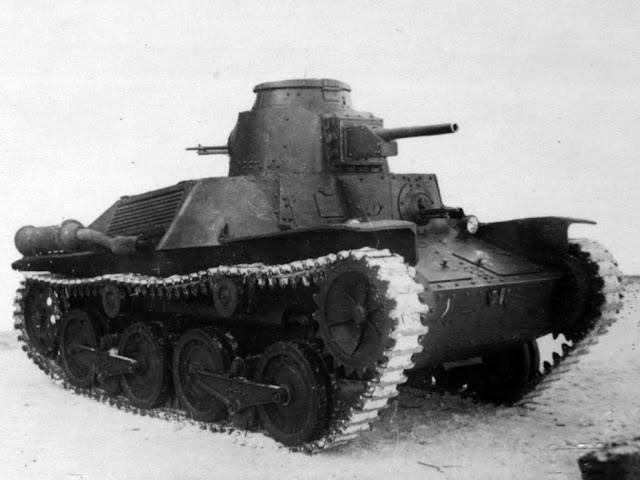
Type 95 Ha-Go at the NIIBT proving grounds
History
In July 1939, during the fighting at Khalkhin-Gol on the border of Mongolia and Manchuria, the Soviets captured a Japanese Type 95 Ha-Go light tank. It belonged to Lieutenant Ito of the Japanese 4th Tank Regiment. His tank was damaged in battle on July 3 and left behind. Soviet troops from the 149th Rifle Regiment, with help from a tank platoon under Lieutenant Alymov, managed to tow it back.
The tank was sent to the Soviet NIIBT proving grounds in late 1939. It had been built by Mitsubishi in May 1937 and carried the serial number 51. This version had a special suspension system called the “Manchurian suspension.” It was designed to handle the rough steppe terrain by adding a small wheel between the bigger ones to reduce shock and wear.
When the Soviets received it, the tank was in poor condition. It had broken bearings, damaged wiring, and a punctured exhaust pipe. Another burnt-out Ha-Go was used for spare parts. Despite this, Soviet engineers managed to repair and run the tank by December 1939.
The Soviets studied the tank closely. They noted the light armor, which only stopped rifle fire, and the 37mm main gun, which they called outdated. The crew compartment was lined with asbestos, and the layout was fairly roomy for such a small tank. They were especially interested in the “Manchurian” suspension, since it was unique to the Japanese units in that region.
By 1940 the Soviets concluded the Ha-Go was already outdated compared to their own new designs like the T-34 and KV. Still, it was useful for learning about Japanese tank building. Records show that in April 1941 the Ha-Go was still at the proving grounds, with talk of sending it to a museum. Its fate after that is unknown.
Type 95 Ha-Go History
In the early 1930s, the Japanese Army found itself at a crossroads. Their main tank, the Type 89 medium, was solid but slow, and it simply couldn’t keep up with fast-moving cavalry units or deal with the poor road networks across Asia. What they needed was something lighter, quicker, and easier to produce.
Work on a new design began in 1933, with Mitsubishi taking on the project. After a few prototypes and field trials, the army settled on the design in 1935, giving it the name Type 95 Ha-Go.
The Ha-Go was small and light, weighing around seven and a half tons. It carried a three-man crew: the commander, who also had to double as the gunner and loader, a driver, and a hull machine gunner. Its main weapon was a 37mm gun, backed by two 7.7 mm machine guns. Power came from a 110-horsepower diesel engine, which gave it a top speed of about 45 km/h plenty fast for the time.
Armor protection, however, was minimal. The thickest plate was only about 12 mm, just enough to stop rifle bullets and shrapnel. Against anything heavier, it was vulnerable. Still, the Japanese Army accepted the trade-off: mobility and ease of production mattered more than heavy protection.
The Ha-Go quickly became the backbone of Japan’s armored forces. It first went into combat in China during the late 1930s, where it proved effective against poorly equipped Chinese troops. By 1939, though, it faced much tougher opposition at Khalkhin Gol, where Soviet BT-series tanks easily outclassed it.
Even with those shortcomings, the Ha-Go remained in frontline service all the way through the Pacific War. It saw action in the Philippines, Malaya, Burma, and across countless islands. In those campaigns, it often faced American M3 Stuarts or even M4 Shermans, against which it stood little chance. Crews sometimes dug their Ha-Gos into the ground to use them as static defenses, knowing they couldn’t win head-to-head tank battles.
What the Ha-Go had going for it was reliability. It was mechanically simple, handled rough ground well, and could be built in large numbers over 2,500 were produced, making it the most common Japanese tank of the war.
By the mid-1940s, though, it was hopelessly outdated. The 37 mm gun couldn’t penetrate Allied armor, and its own armor was paper-thin against just about anything heavier than a machine gun. Still, the Type 95 Ha-Go tells the story of Japan’s approach to tank design: a focus on speed, numbers, and mobility in the 1930s, even if it meant their tanks couldn’t stand up to later Allied machines.
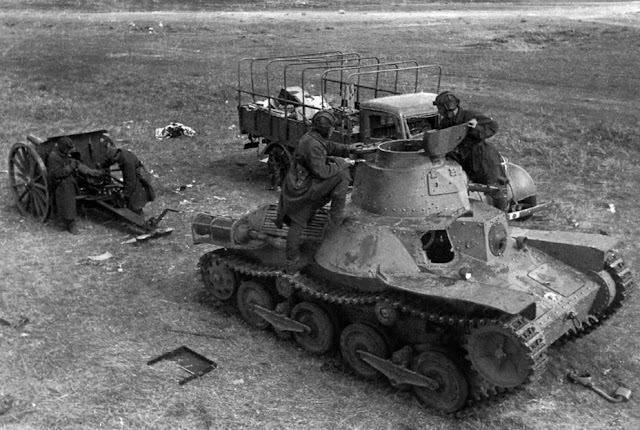
Lieutenant Ito’s Ha-Go tank in the Soviet rear, July 1939
This is the same vehicle repaired and trialed at NIIBT.
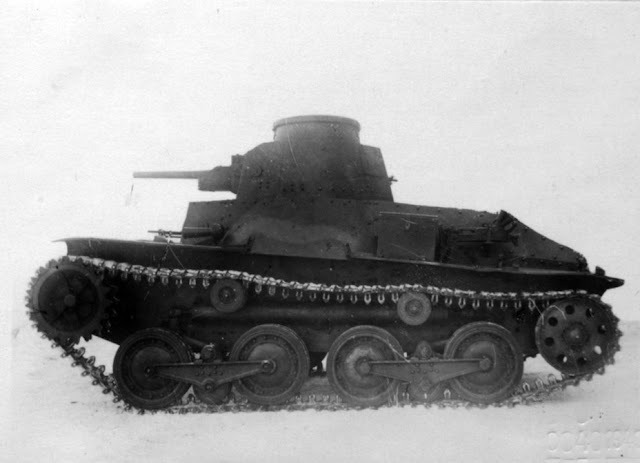
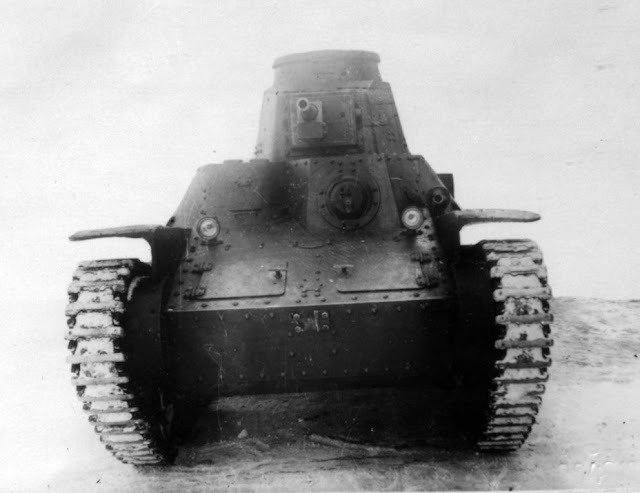
“The same tank from the front. A Soviet horn is installed”.
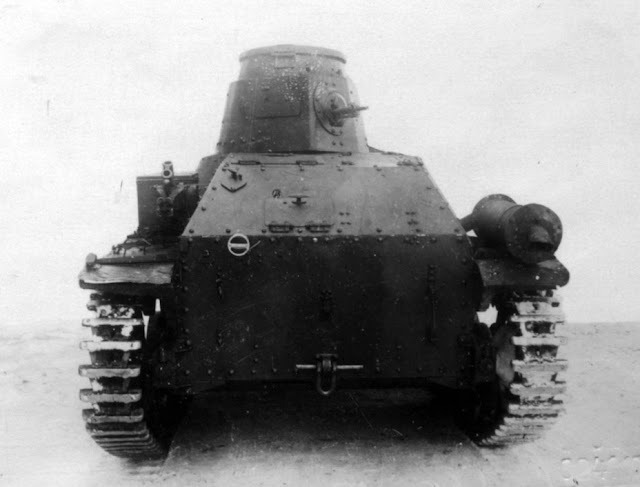
“A Soviet brake signal was added instead of a Japanese one.”
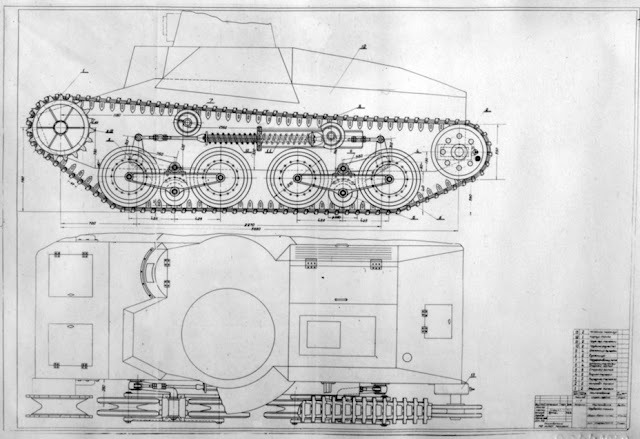
Diagram of the tank’s suspension.
Specifications
General
- Origin: Japan
- Number Produced: 2,500+
- Number Captured: Unknown
Dimensions
- Length: 4.38 m
- Width: 2.06 m
- Height: 2.11 m
Weight
- Combat weight: 7.4–7.5 tons
Powerplant
- Engine: Mitsubishi air-cooled diesel
- Type: 6-cylinder inline, air-cooled
- Power output: 110 hp
Performance
- Maximum speed: 45 km/h (road)
- Operational range: 200 km
- Power-to-weight ratio: ~14.7 hp/ton
Armament (standard)
- 1 × Type 94 37 mm tank gun
- 2 × Type 91 7.7 mm machine guns
Optional Modifications / Notes
- “Manchurian” suspension variant with extra small road wheel for rough terrain